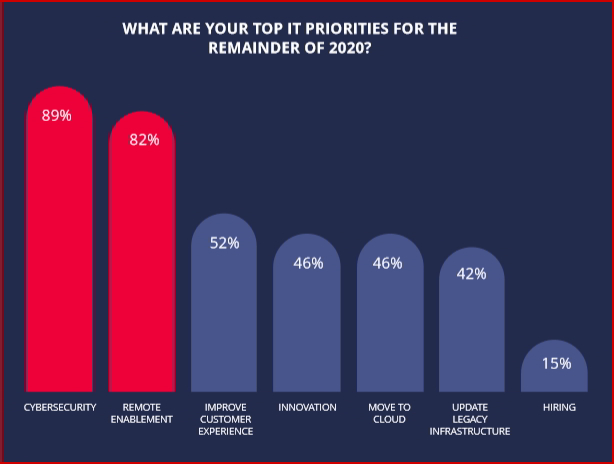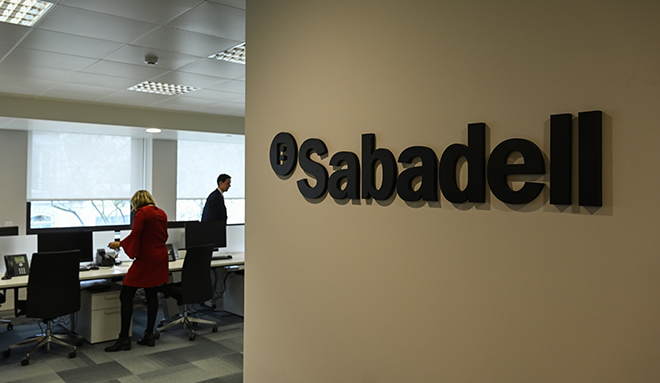5% Of Manufacturers Rank Cybersecurity As Top Investment Priority

Table of Contents
The High Cost of Cybersecurity Neglect in Manufacturing
The financial repercussions of inadequate manufacturing cybersecurity are staggering. The consequences extend far beyond the immediate costs of a breach, impacting profitability, reputation, and operational efficiency.
Financial Losses from Cyberattacks
A single data breach can inflict crippling financial losses on manufacturers. Costs associated with data breach cost recovery include:
- Ransomware attacks: The escalating cost of ransomware demands, coupled with the expense of decryption and system restoration.
- Lost revenue: Production halts, disrupted supply chains, and lost sales due to operational downtime.
- Remediation costs: The extensive resources required to investigate breaches, repair damaged systems, and implement improved security measures.
- Legal penalties and fines: Compliance violations and regulatory penalties for data breaches, especially regarding sensitive customer or operational data.
For instance, a mid-sized manufacturing company experiencing a ransomware attack could face hundreds of thousands, or even millions, of dollars in costs, including manufacturing downtime and lost productivity.
Reputational Damage and Customer Loss
Cyberattacks severely damage brand reputation and erode customer loyalty. News of a breach can lead to:
- Loss of customer trust: Customers may be hesitant to do business with a company that has demonstrated inadequate security practices.
- Supply chain disruption: Breaches impacting a manufacturer can ripple through the entire supply chain, causing delays and impacting other businesses.
- Negative media coverage: Public disclosure of a cybersecurity incident can lead to significant negative publicity, further damaging the company's reputation.
The long-term impact on customer loyalty following a publicized security incident can be devastating, impacting revenue for years to come.
Operational Disruption and Production Halts
Cyberattacks targeting operational technology (OT) and industrial control systems (ICS) can bring entire manufacturing plants to a standstill. Consequences include:
- Production downtime: Disruption of critical manufacturing processes can lead to significant production delays and lost output.
- Equipment damage: Malware can damage or destroy physical equipment, incurring substantial repair costs.
- Safety risks: Compromised systems controlling industrial processes can pose serious safety hazards to personnel and the environment.
The resulting production downtime translates directly into lost revenue and can disrupt contractual obligations, damaging relationships with clients.
Why Cybersecurity Investment Remains Low in Manufacturing
Despite the obvious risks, many manufacturers remain hesitant to prioritize cybersecurity investment. This reluctance stems from a combination of factors:
Lack of Awareness and Understanding
A significant obstacle is a lack of cybersecurity awareness among manufacturing executives. Many believe that:
- Manufacturing is somehow less susceptible to cyberattacks than other sectors. This is a dangerous misconception.
- The costs of implementing robust security measures outweigh the potential benefits. This is often incorrect.
- Adequate risk assessment and vulnerability management are not critical to their business.
Improving cybersecurity awareness through training and education is a fundamental first step.
Budget Constraints and Prioritization
Budget limitations often force manufacturers to deprioritize cybersecurity investment in favor of immediate operational needs. However:
- A strategic cost-benefit analysis demonstrates that robust cybersecurity significantly reduces long-term financial risks.
- A well-defined cybersecurity budget allocated for prevention is significantly less costly than reactive responses to breaches.
- Effective communication highlighting the return on investment (ROI) of cybersecurity can sway leadership decisions.
Showcasing the financial impact of potential breaches can help secure the necessary budget.
Skills Gap and Lack of Expertise
A critical challenge is the cybersecurity skills gap in the manufacturing sector. Many manufacturers struggle to:
- Recruit and retain skilled IT security professionals with expertise in industrial control systems (ICS) security.
- Provide adequate cybersecurity training for existing employees to raise overall awareness.
- Implement effective strategies to address the shortage of skilled personnel.
Addressing this requires investment in training programs and partnerships with cybersecurity specialists.
Improving Cybersecurity Posture in Manufacturing
Manufacturers must proactively strengthen their cybersecurity defenses. This involves a multifaceted approach:
Implementing Robust Cybersecurity Strategies
Effective strategies include:
- Implementing multi-factor authentication (MFA) for all user accounts.
- Employing network segmentation to isolate critical systems from less secure networks.
- Regularly conducting security audits and penetration testing to identify vulnerabilities.
- Deploying an intrusion detection system (IDS) to monitor network traffic for malicious activity.
These measures significantly improve the resilience of manufacturing environments.
Investing in Cybersecurity Technologies
Investing in the right technology is vital. Essential tools include:
- Endpoint detection and response (EDR) solutions to detect and respond to threats on individual devices.
- Security information and event management (SIEM) systems to collect and analyze security logs from multiple sources.
- Regular vulnerability scanning to identify and address security flaws in software and hardware.
These technologies provide proactive defense and facilitate timely responses to incidents.
Building a Cybersecurity Culture
A strong cybersecurity culture is paramount. This involves:
- Regular employee training and security awareness training programs.
- Establishing clear security policies and procedures.
- Fostering a culture of reporting and addressing security incidents promptly.
A culture of security empowers employees to actively contribute to a more secure environment.
Conclusion: Prioritizing Manufacturing Cybersecurity for a Secure Future
The overwhelming evidence demonstrates the critical need for manufacturers to prioritize manufacturing cybersecurity investment. Neglecting cybersecurity is not only financially reckless but also poses significant risks to operational continuity, brand reputation, and even safety. By implementing robust security strategies, investing in advanced technologies, and cultivating a strong security culture, manufacturers can significantly mitigate the risks and protect their bottom line. Don't wait for a devastating cyberattack to prioritize your security. Reassess your current manufacturing cybersecurity strategy, identify vulnerabilities, and invest in the resources and expertise needed to protect your business. Contact a cybersecurity specialist today to learn more about effective industrial cybersecurity solutions.

Featured Posts
-
 Analyzing Partynextdoors Public Apology After Tory Lanez Incident
May 13, 2025
Analyzing Partynextdoors Public Apology After Tory Lanez Incident
May 13, 2025 -
 Eva Longoria 50 Evesen Fitnesz Titkai Es Bikinialak
May 13, 2025
Eva Longoria 50 Evesen Fitnesz Titkai Es Bikinialak
May 13, 2025 -
 Sabadell And Unicaja Key Details On The Proposed Merger
May 13, 2025
Sabadell And Unicaja Key Details On The Proposed Merger
May 13, 2025 -
 Javna Obravnava Novele Zakona O Romski Skupnosti Kljucni Vidiki
May 13, 2025
Javna Obravnava Novele Zakona O Romski Skupnosti Kljucni Vidiki
May 13, 2025 -
 Elsbeth S02 E18 S02 E19 And Finale A Sneak Peek
May 13, 2025
Elsbeth S02 E18 S02 E19 And Finale A Sneak Peek
May 13, 2025
